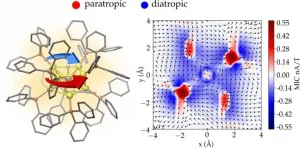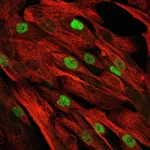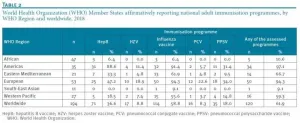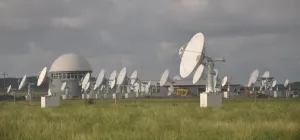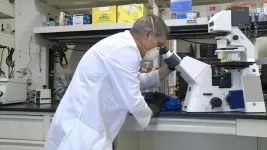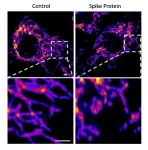CO2 catalysis made more accessible
An economical alloy-based aerogel as electrocatalyst for carbon fixation
2021-04-30
(Press-News.org) Many industrial processes emit carbon dioxide into the atmosphere. Unfortunately, however, current electrochemical separation methods are expensive and consume large amounts of power. They also require expensive and rare metals as catalysts. A study in the journal Angewandte Chemie describes a new aerogel electrocatalyst formed from an inexpensive metal alloy, which enables highly efficient electrochemical conversion of carbon dioxide. The main product is formic acid, which is a nontoxic basic chemical.
Capturing and chemically fixing carbon dioxide from industrial processes would be a huge step towards carbon neutrality. To prevent the notorious greenhouse gas from escaping into the air, it can be compressed and stored. Another option is electrochemical conversion to give other carbon compounds.
However, due to high power consumption and the cost of catalysts, electrochemical separation methods cannot be used on an industrial scale. This prompted Tianyi Ma of Swinburne University of Technology in Hawthorn, Australia, and colleagues to investigate replacement materials. The electrocatalysts currently used are made from precious metals such as platinum and rhenium. They catalyze electrochemical carbon fixation processes very efficiently, but they are also very expensive.
The authors discovered that the nonprecious metals tin and bismuth can form aerogels, which are incredibly light materials with particularly promising catalyst properties. Aerogels contain an ultraporous network that promotes electrolyte transport. They also offer up abundant sites where the electrochemical processes can take place.
To produce the aerogels, the team mixed a solution of bismuth and tin salts with a reducing agent and a stabilizer. Simply stirring this mixture led to a stable hydrogel of a bismuth-tin alloy after six hours at room temperature. A straightforward freeze-drying process produced the aerogel, formed of loosely interwoven and branched nanowires.
The authors found the bimetallic aerogel performed outstandingly well for carbon dioxide conversion. Compared to pure bismuth, pure tin, or the non-freeze-dried alloy, a significantly higher current density was observed. The conversion took place with an efficiency of 93%, which was at least as efficient, if not more so, than the standard materials currently used, indicating a low-waste process.
The process showed "excellent selectivity and stability for the production of formic acid under normal pressure at room temperature." The only byproducts were carbon monoxide and hydrogen formed in miniscule amounts. The authors explain that this selectivity and stability was a result of the energy conditions at the surface of the alloy. Here, the carbon dioxide molecules accumulate in such a way that the carbon atom is free to bind hydrogen atoms from water molecules. This gives formic acid as the favored product.
This research hints at positive future prospects for other combinations of metals. It is likely that other nonprecious metals would convert to aerogels, forming inexpensive, nontoxic, and highly efficient catalysts for electrochemical carbon dioxide reduction.
INFORMATION:
About the Author
Dr. Tianyi Ma is an Associate Professor at the Faculty of Science, Engineering and Technology of Swinburne University of Technology, Hawthorn, Australia. He works on the rational design, synthesis, and characterization of nanostructured materials for energy and environment-related applications in catalysis, adsorption, and separation, as well as energy conversion and storage.
https://www.swinburne.edu.au/research/our-research/access-our-research/find-a-researcher-or-supervisor/researcher-profile/?id=TIANYIMA
ELSE PRESS RELEASES FROM THIS DATE:
2021-04-30
Researchers in the Nanoscience Center of University of Jyvaskyla, in Finland and in the Guadalajara University in Mexico developed a method that allows for simulation and visualization of magnetic-field-induced electron currents inside gold nanoparticles. The method facilitates accurate analysis of magnetic field effects inside complex nanostructures in nuclear magnetic resonance measurements and establishes quantitative criteria for aromaticity of nanoparticles. The work was published 30.4.2021 as an Open Access article in Nature Communications.
According to the classical electromagnetism, a charged particle moving in an external magnetic field experiences a force that makes the particle's path circular. This basic law of physics is used, e.g., in designing cyclotrons ...
2021-04-30
Muscle stem cells enable our muscle to build up and regenerate over a lifetime through exercise. But if certain muscle genes are mutated, the opposite occurs. In patients suffering from muscular dystrophy, the skeletal muscle already starts to weaken in childhood. Suddenly, these children are no longer able to run, play the piano or climb the stairs, and often they are dependent on a wheelchair by the age of 15. Currently, no therapy for this condition exists.
"Now, we are able to access these patients' gene mutations using CRISPR-Cas9 technology," explains Professor Simone Spuler, head of the Myology Lab at the Experimental and Clinical Research Center (ECRC), a joint institution of the Max Delbrück Center for Molecular Medicine in the Helmholtz Association and Charité ...
2021-04-30
Effectively and safely protecting against disease--this is what makes vaccines a vital and successful public health tool that saves lives and safeguards health and well-being. Today, vaccines shield us from more than 20 life-threatening diseases.
Each year, between 2 to 3 million lives are saved by immunisation against diseases like diphtheria, tetanus, pertussis, influenza or measles [1]. However, several vaccines such as the one against measles can only reach their full potential--protecting not just those who are immunised, but also those who might not be eligible for vaccination--if ...
2021-04-30
Prof. YAN Yihua and his research team from the National Astronomical Observatories of the Chinese Academy of Sciences (NAOC) recently released detailed results of observations by the new generation solar radio telescope--Mingantu Spectral Radio Heliograph (MUSER)--from 2014 to 2019.
The study was published in Frontiers in Astronomy and Space Sciences on March 29. It may help us better understand the basic nature of solar eruptions.
Solar radio bursts are associated with different types of powerful eruptions like solar flares, coronal mass ejections, and various thermal and nonthermal processes. They are prompt indicators of disastrous space weather events.
Solar radio observations, especially at centimeter ...
2021-04-30
As the health of ecosystems in regions around the globe declines due to a variety of rising threats, scientists continue to seek clues to help prevent future collapses.
A new analysis by scientists from around the world, led by a researcher at the University of California San Diego, is furthering science's understanding of species interactions and how diversity contributes to the preservation of ecosystem health.
A coalition of 49 researchers examined a deep well of data describing tree species in forests located across a broad range of countries, ecosystems and latitudes. Information about the 16 forest diversity plots in Panama, China, Sri Lanka, Puerto Rico and other locations--many in remote, inaccessible ...
2021-04-30
Jeremy Edwards, director of the Computational Genomics and Technology (CGaT) Laboratory at The University of New Mexico, and his colleagues at Centrillion Technologies in Palo Alto, Calif. and West Virginia University, have developed a chip that provides a simpler and more rapid method of genome sequencing for viruses like COVID-19.
Their research, titled, "Highly Accurate Chip-Based Resequencing of SARS-CoV-2 Clinical Samples" was published recently in the American Chemical Society's Langmuir. As part of the research, scientists created a tiled genome array they developed for rapid and inexpensive full viral genome resequencing and applied their SARS-CoV-2-specific genome tiling array to rapidly and accurately resequenced ...
2021-04-30
Boston, MA (April 30, 2021) - A new study, presented today at the AATS 101st Annual Meeting, shows that non-invasive cell-free DNA tests can reduce the need for regular surveillance biopsies to detect early rejection in heart transplant patients. The study was the first of its kind to be performed on both adult and pediatric patients.
Pediatric and adult heart transplant recipients were recruited prospectively from eight participating sites and followed longitudinally for at least 12 months with serial plasma samples collected immediately prior to all endomyocardial biopsies. Structured biopsy results and clinical data were collected and monitored by an independent clinical research organization (CRO).
For ...
2021-04-30
Boston, MA (April 30, 2021) - A new study, presented today at the AATS 101st Annual Meeting, found that severely ill COVID-19 patients treated with ECMO did not suffer worse long-term outcomes than other mechanically-ventilated patients. The multidisciplinary team included cardio thoracic surgeons, critical care doctors, medical staff at long-term care facilities, physical therapists and other specialists, and followed patients at five academic centers: University of Colorado; University of Virginia; University of Kentucky; Johns Hopkins University; and Vanderbilt University. ...
2021-04-30
LA JOLLA--(April 30, 2021) Scientists have known for a while that SARS-CoV-2's distinctive "spike" proteins help the virus infect its host by latching on to healthy cells. Now, a major new study shows that they also play a key role in the disease itself.
The paper, published on April 30, 2021, in Circulation Research, also shows conclusively that COVID-19 is a vascular disease, demonstrating exactly how the SARS-CoV-2 virus damages and attacks the vascular system on a cellular level. The findings help explain COVID-19's wide variety of seemingly unconnected complications, and could ...
2021-04-30
While the CRISPR-Cas9 gene editing system has become the poster child for innovation in synthetic biology, it has some major limitations. CRISPR-Cas9 can be programmed to find and cut specific pieces of DNA, but editing the DNA to create desired mutations requires tricking the cell into using a new piece of DNA to repair the break. This bait-and-switch can be complicated to orchestrate, and can even be toxic to cells because Cas9 often cuts unintended, off-target sites as well.
Alternative gene editing techniques called recombineering instead perform this bait-and-switch ...
LAST 30 PRESS RELEASES:
[Press-News.org] CO2 catalysis made more accessible
An economical alloy-based aerogel as electrocatalyst for carbon fixation
